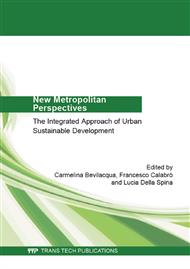p.356
p.364
p.376
p.380
p.386
p.392
p.402
p.410
p.417
Challenges and Opportunities for Assessing Cultural Landscape: An Ecomuseum for Cultural-Based Local Development
Abstract:
This study arises from applied research in regional contexts combined with a deep analysis of cultural landscape potential for socio-cultural and economic local development. In addition, it starts from a careful critical reflection on traditional governance models of naturalistic contexts located on the sidelines of metropolitan suburbs in delay development. It is aimed at deepening the theoretical recognition of the identifying characteristics of the Aspromonte National Park as an inseparable reality and to the definition of rurality as an important tourist attraction and as endogenous development. Moreover the paper present a summary of a pilot project for the definition, assessment and implementation of a model of Ecomuseum of the Cultural Landscape, through the identification of homogeneous territorial areas in which to conduct experimentation and implementation of management models able to trigger processes of exploitation and growth of the Aspromonte area thanks to an innovative strategic planning focused on the community involvement and heritage enhancement.
Info:
Periodical:
Pages:
386-391
Citation:
Online since:
June 2014
Authors:
Keywords:
Permissions:
Share:
Citation:


